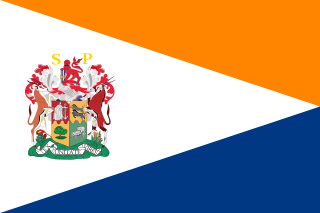This page is based on this
Wikipedia article Text is available under the
CC BY-SA 4.0 license; additional terms may apply.
Images, videos and audio are available under their respective licenses.

Bophuthatswana, officially the Republic of Bophuthatswana, was a Bantustan which was declared nominally independent by the apartheid regime of South Africa in 1977. However, its independence, like the other Bantustans was not recognized by any country other than South Africa.

Transkei, officially the Republic of Transkei, was an unrecognised state in the southeastern region of South Africa from 1976 to 1994. It was a Bantustan—an area set aside for members of a specific ethnicity—and operated as a nominally independent parliamentary democracy. Its capital was Umtata.
Lennox Leslie Wongama Sebe was chief minister of the Xhosa bantustan of Ciskei, and the country's first president, after its self-rule in 1972.
Kaiser Daliwonga Mathanzima, misspelled Matanzima, was the long-term leader of Transkei.
Joshua Oupa Gqozo was the military ruler of the former homeland of Ciskei in South Africa.

KwaNdebele was a bantustan in South Africa, intended by the apartheid government as a semi-independent homeland for the Ndebele people. The homeland was created when the South African government purchased nineteen white-owned farms and installed a government.

Apartheid was a system of institutionalised racial segregation that existed in South Africa from 1948 until the early 1990s. Apartheid was characterised by an authoritarian political culture based on baasskap, which encouraged state repression of Black African, Coloured, and Asian South Africans for the benefit of the nation's minority white population. The economic legacy and social effects of apartheid continue to the present day.

The Bantu Homelands Citizenship Act, 1970 was a Self Determination or denaturalization law passed during the apartheid era of South Africa that allocated various tribes/nations of black South Africans as citizens of their traditional black tribal "homelands," or Bantustans.

The Military Rule Medal was instituted by the State President of the Republic of Transkei to commemorate the bloodless military coup d'état which overthrew the Transkei government on 30 November 1987.
The system of social segregation in South Africa known as was implemented and enforced by a large number of acts and other laws. This legislation served to institutionalise racial discrimination and the dominance by white people over people of other races. While the bulk of this legislation was enacted after the election of the National Party government in 1948, it was preceded by discriminatory legislation used under earlier British and Boer governments. Apartheid is distinguished from segregation in other countries by the systematic way in which it was formalised in law.

The Bisho massacre occurred on 7 September 1992 in Bisho, in the then nominally independent homeland of Ciskei which is now part of the Eastern Cape in South Africa. Twenty-eight African National Congress supporters and one soldier were shot dead by the Ciskei Defence Force during a protest march when they attempted to enter Bisho to demand the reincorporation of Ciskei into South Africa during the final years of apartheid.
The Democratic Progressive Party was a political party in the South African bantustan of Transkei. The party condemned apartheid rule. In the 1981 elections, the party won one out of 75 seats. In the 1986 elections it won two seats.
Paramount Chief Botha Sigcau was a chief in Eastern Pondoland, Transkei, South Africa (1939–1976) and later President of Transkei from 1976-1978. A graduate of University of Fort Hare, Sigcau was an early supporter of the Bantu Authorities in Transkei and was rewarded by the South African government when he was appointed chairman of the Transkei Territorial Authority, the parliament before independence.
Chief George Mzivubu Mathanzima was a leader of the Transkei bantustan in South Africa. He and his brother, Kaiser co-founded and led the Transkei National Independence Party. George Matanzima was appointed as Prime Minister of Transkei after his brother became President. George Matanzima served as Prime Minister from 20 February 1979 to 24 September 1987. Bantu Holomisa forced the resignation and then the exile of Matanzima in October 1987. Stella Sigcau became Prime Minister, but Holomisa soon forced her out of office also and took power himself in December 1987.

The Bantu Homelands Constitution Act, 1971 enabled the government of South Africa to grant independence to any "Homeland" as determined by the South African apartheid government. In accordance with this act, independence was eventually granted to Transkei in 1976, Bophuthatswana in 1977, Venda in 1979, and Ciskei in 1981.
An independence referendum was held in the South African Bantustan of Ciskei on 4 December 1980. Over 99% of voters voted in favour, and Ciskei was declared independent in 1981 after the Status of Ciskei Act, 1981 was passed by the South African government. The results of the referendum were pronounced on 17 December.

The first South African military medal was a campaign medal, the South Africa Medal, instituted in 1854 by Queen Victoria, the Monarch of the United Kingdom of Great Britain and Ireland, for award to officers and men of the Royal Navy and British Army who served on the Eastern Frontier of the Cape Colony between 1834 and 1853 during the Xhosa Wars.

The Transkei Defence Force (TDF) was established during March 1981, from the 141 Battalion of the South African Defence Force (SADF). It was the defence force of the Republic of Transkei, a nominally independent bantustan during the Apartheid era of South Africa.















